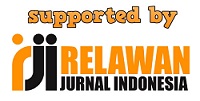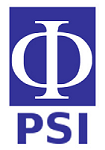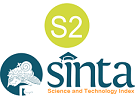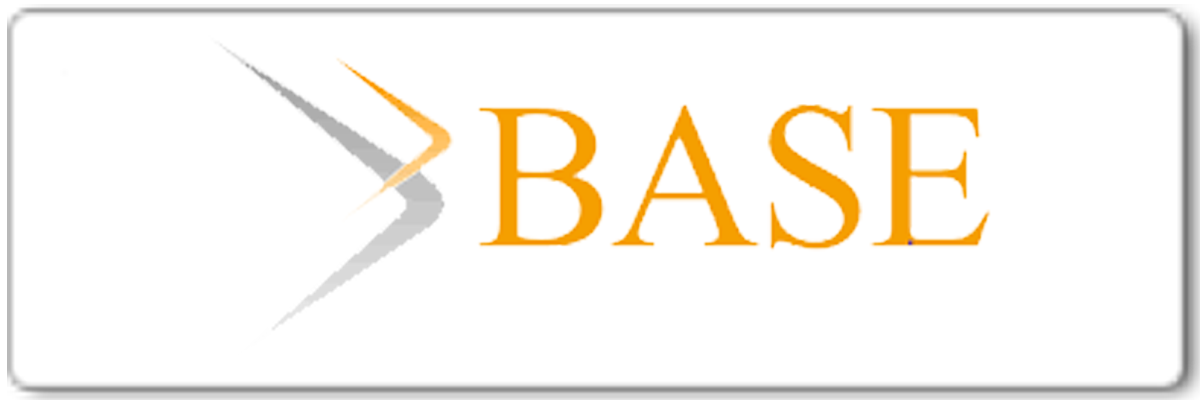Development of Electronic Modules based on Science, Technology, Engineering and Mathematical (STEM) Approaches in Vibration and Wave Courses
Abstract
This study aims to produce vibration and wave teaching materials in electronic modules based on the STEM approach. This study uses research and development methods with a 4D development model. The research subjects were all Physics Education study program students who took vibration and wave courses. Data collection tools include validation sheets (materials and media), response questionnaires to measure the practicality of the module, and tests to measure the module's effectiveness. The data analysis technique uses proportions with predetermined criteria and practicality. The effect size equation is used to measure the module's effectiveness. The results showed that (1) the e-module was feasible to use according to the expert with an average value of 3.77 material and media validation results and 3.86 very valid categories; (2) the practicality of the e-module with a very practical category is 76.75% and (3) the effectiveness of the e-module in increasing the HOTS of students with the criteria is very effective.
Keywords
Full Text:
PDFReferences
Alfiriani, A., & Hutabri, E. (2017). Kepraktisan dan keefektifan modul pembelajaran bilingual berbasis komputer. Jurnal Kependidikan, 1(1), 12–23.
Anderson, L. W., & Krathwohl, D. R. (2002). A Taxonomy for Learning, Teaching, and Assesing: A Revision of Bloom’s Taxonomy of Educatioanl Objectives. Addison Wesley Longman, Inc.
Ariyanti, I., Lesmono, A. D., & Supriadi, B. (2019). Kelayakan E- Modul Flow Virtual Simulation Berbasis. Jurnal Pembelajaran Fisika, 8(3), 214–221.
Citrasukmawati, A., Rahardjo, R., & Tjandrakirana, T. (2017). Pengembangan Perangkat Pembelajaran Ipa Dengan Tampilan Macromedia Flash Di Smp. JPPS (Jurnal Penelitian Pendidikan Sains), 1(2), 94–100. https://doi.org/10.26740/jpps.v1n2.p94-100
Cohen, J. (1998). Statistictical power analysis for the behavioral science, Second Edition. Lawrence Erlbaum Associate.
Darmawan, D. (2014). Pengembangan E-lerning Teori dan Lesan. PT Remaja Rosdakarya Offset.
Deafirmanda, Y., Astuti, I., & Usman, A. (2017). Pengembangan Modul Pembelajaran Reaksi Reduksi-oksidasi dengan Pendekatan Konstruktivistik. Jurnal Pendidikan Dan Pembelajaran Khatulistiwa, 6(11), 1–9.
Ferdianto, F., Setiyani, & Nurulfatwa, D. (2019). 3D page flip professional: Enhance of representation mathematical ability on linear equation in one variable. Journal of Physics: Conference Series, 1188(1). https://doi.org/10.1088/1742-6596/1188/1/012043
Fitriyani, A., Toto, T., & Erlin, E. (2020). IMPLEMENTASI MODEL PjBL-STEM UNTUK MENINGKATKAN KETERAMPILAN BERPIKIR TINGKAT TINGGI. Bioed : Jurnal Pendidikan Biologi, 8(2), 1–6. https://doi.org/10.25157/jpb.v8i2.4375
Gunawan, I., & Paluti, A. R. (2017). Taksonomi Bloom–revisi ranah kognitif: kerangka landasan untuk pembelajaran, pengajaran, dan penilaian. Premiere Educandum: Jurnal Pendidikan Dasar & Pembelajaran, 20(2), 98–117. http://e-journal.unipma.ac.id/index.php/PE
Handayani, E. S., Yuberti, Saregar, A., & Wildaniati, Y. (2021). Development of STEM-integrated physics e-module to train critical thinking skills: The perspective of preservice teachers. IOP Conference Series: Earth and Environmental Science, 1796(1). https://doi.org/10.1088/1742-6596/1796/1/012100
Maizora, S. (2016). Pembuatan Media Pembelajaran dengan Macromedia Flash 8.
Mustofa, I. (2016). Jendela Logika dalam Berfikir; Deduksi dan Induksi sebagai Dasar Penalaran Ilmiah. EL-BANAT: Jurnal Pemikiran Dan Pendidikan Islam, 6(2), 1–21.
Nurhayati, & Angraeni, L. (2017). Analisis Kemampuan Berpikir Tingkat Tinggi Mahasiswa (Higher Order Thinking) dalam Menyelesaikan Soal Konsep Optika melalui Model Problem Based Learning. Jurnal Penelitian & Pengembangan Pendidikan Fisika, 3(2), 119–126. https://doi.org/10.21009/1.03201
Nurhayati, N., Wahyudi, W., & Saputri, D. F. (2022). Implementation of vibration and waves module based on stem education to improve higher-order thinking ability viewed from student’s self confidence. Jurnal Pendidikan Matematika Dan IPA, 13(1), 40–50.
Nurramadhani, A., Lathifah, S. S., & Permana, I. (2020). Students’ Generated Questions Quality by Developing STEM-based E-Module in Science Learning. Scientiae Educatia, 9(2), 134–152. https://doi.org/10.24235/sc.educatia.v9i2.7131
Serevina, V., Sunaryo, Raihanati, Astra, I. M., & Sari, I. J. (2018). Development of E-Module Based on Problem Based Learning (PBL) on Heat and Temperature to Improve Student’s Science Process Skill. The Turkish Online Journal of Educational Technology, 17(3), 26–36.
Suastika, K. I., & Triwahyuningtyas, D. (2019). Pengembangan E-Modul Berbasis Inkuiri Untuk Pembelajaran Geometri. Mathematics Education Journal, 2(2), 98–103.
Sudirman, Kistiono, & Taufiq. (2018). Pengembangan Modul Mata Kuliah Gelombang Berbasis STEM (Science, Technology, Engineering and Mathematics) pada Program Studi Pendidikan Fisika. Jurnal Inovasi Dan Pembelajaran Fisika (JIPF), 5(2), 134–140.
Sugianto, D., Abdullah, A. G., Elvyanti, S., & Muladi, Y. (2013). Modul Virtual: Multimedia Flipbook Dasar Teknik Digital. Innovation of Vocational Technology Education, 9(2), 101–116. https://doi.org/10.17509/invotec.v9i2.4860
Sugiyono. (2018). Metode Penelitian Pendidikan (Pendekatan Kuantitatif, Kualitatif, dan R&D). ALFABETA CV.
Sulastri, A., Badruzsaufari, B., Dharmono, D., Aufa, M. N., & Saputra, M. A. (2022). Development of Science Handouts Based on Critical Thinking Skills on the Topic of the Human Digestive System. Jurnal Penelitian Pendidikan IPA, 8(2), 475–480. https://doi.org/10.29303/jppipa.v8i2.1156
Zhang, J., Cai, Z., Zhao, Z., & Ji, K. (2017). Cell Phone-based Online Biochemistry and Molecular Biology Medical Education Curriculum. Medical Education Online, 22(1).
Article Metrics
Abstract has been read : 439 timesPDF file viewed/downloaded: 0 times
DOI: http://doi.org/10.25273/jpfk.v9i1.13261
Refbacks
- There are currently no refbacks.

This work is licensed under a Creative Commons Attribution-ShareAlike 4.0 International License.
Universitas PGRI Madiun
Jl. Setiabudi No. 85 Kota Madiun 63118
Lt 2 Office Physics Education
email : jpfk@unipma.ac.id
Copyright Jurnal Pendidikan Fisika dan Keilmuan (JPFK) ISSN 2442-8868 (printed) , ISSN 2442-904X (online)

JURNAL PENDIDIKAN FISIKA DAN KEILMUAN by http://e-journal.unipma.ac.id/index.php/JPFK/index is licensed under a Creative Commons Attribution-ShareAlike 4.0 International License.
















